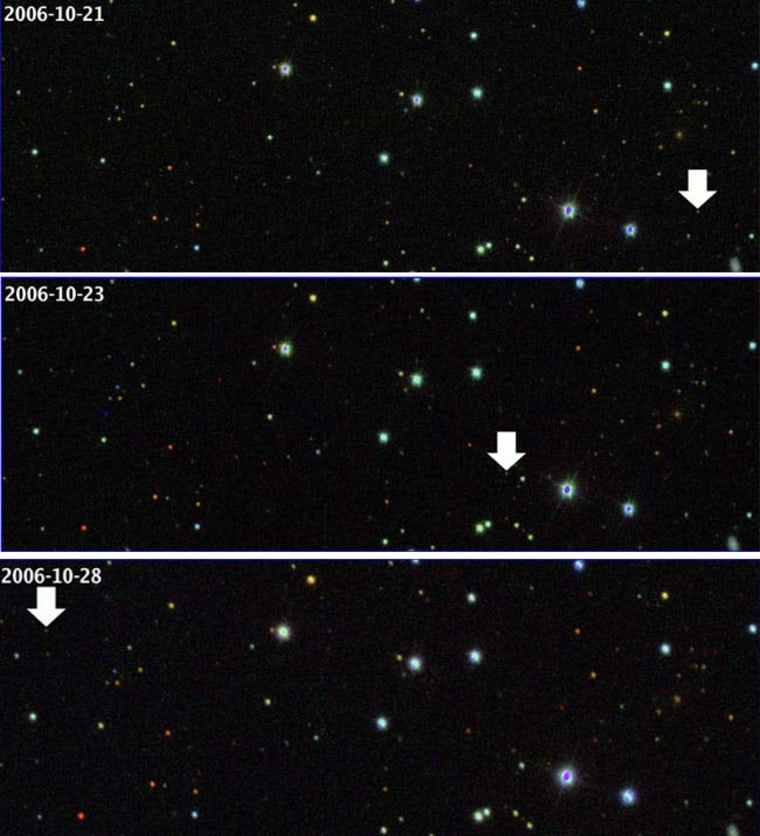A huge comet-like object has been spotted inside the orbit of Neptune. The object, at least 30 miles wide, is on the return leg of a 22,500-year journey around the sun, astronomers announced today.
Catalogued as 2006 SQ372, the interloper is just over two billion miles from Earth, though its elongated trek takes it to a distance of 150 billion miles, or nearly 1,600 times the distance from the Earth to the sun.
The only known object with a comparable orbit is Sedna — a distant, Pluto-like dwarf planet discovered in 2003. But 2006 SQ372's travels take it more than 1.5 times farther from the sun. Its diameter is estimated at 30 to 60 miles.
"It's basically a comet, but it never gets close enough to the sun to develop a long, bright tail of evaporated gas and dust," said Andrew Becker of the University of Washington. Comet tails form when solar energy boils material off a comet.
The object is not a threat to Earth, which is good. A comet that size would cause global devastation. The space rock that contributed to the demise of dinosaurs 65 million years ago was about 6 miles wide. The comet Hale-Bopp, which put on a spectacular display in the late 1990s, is about 31 miles in diameter. Yet many comets are just a mile or two wide.
Becker's team found 2006 SQ372 by applying a computer searching algorithm to data taken from the Sloan Digital Sky Survey II (SDSS II), which is tasked with finding supernova explosions billions of light-years away to measure the expansion of the universe. In the survey, the Apache Point Observatory telescope scanned the same long stripe of sky, an area 1,000 times larger than the full moon in the sky, every clear night in the fall of 2005, 2006 and 2007.
As to how 2006 SQ372 got its unusual orbit, University of Washington graduate student Nathan Kaib, another member of the discovery team, has some ideas based on his computer simulations of the object.
"It could have formed, like Pluto, in the belt of icy debris beyond Neptune, then been kicked to large distance by a gravitational encounter with Neptune or Uranus," Kaib said. "However, we think it is more probable that SQ372 comes from the inner edge of the Oort Cloud."
The Oort Cloud is a huge spherical cloud surrounding the solar system. It extends about 18 trillion miles from the sun and was first proposed in 1950 by Dutch astronomer Jan Oort.
The discovery was reported today in Chicago, at an international symposium titled "The Sloan Digital Sky Survey: Asteroids to Cosmology." The researchers plan to submit details of the finding for publication in the Astrophysical Journal.
